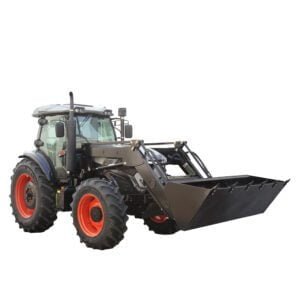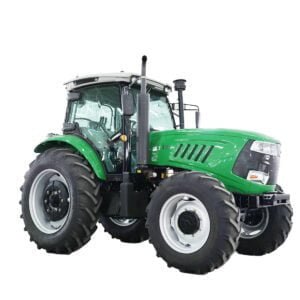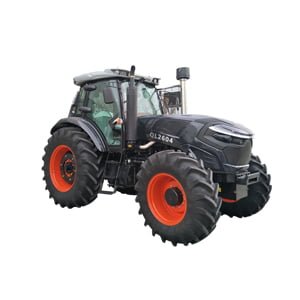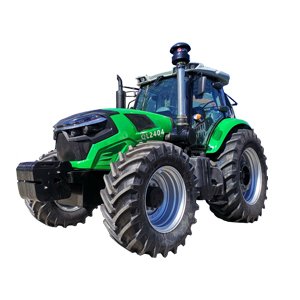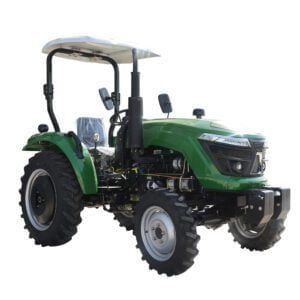E-mail: [email protected] WhatsApp: 8618266768780
Les 10 meilleures pièces de tracteur que chaque agriculteur devrait connaître
Bienvenue sur mon blog !
Avant de plonger dans le contenu, j'aimerais que vous me rejoigniez sur mes plateformes de médias sociaux où je partage plus d'informations, interagis avec la communauté et publie des mises à jour. Voici comment vous pouvez me contacter :
Facebook : https://www.facebook.com/profile.php?id=100072217509763
LinkedIn : https://www.linkedin.com/company/74949059/admin/dashboard/
YouTube :www.youtube.com/@tractormanufacturer-lc5qz,www.youtube.com/@excavatormanufacturers-sn9hk
TikTok : www.tiktok.com/@tractormanufacturer, www.tiktok.com/@excavatormanufacturers
Commençons maintenant notre voyage ensemble. J'espère que vous trouverez le contenu ici instructif, engageant et utile.
Introduction
Il est essentiel pour tout agriculteur de comprendre les pièces essentielles d'un tracteur. Les tracteurs sont des machines complexes composées de nombreux composants qui fonctionnent ensemble pour garantir des performances optimales. Que vous soyez un agriculteur chevronné ou un nouveau venu dans le domaine, la connaissance de ces pièces clés du tracteur peut vous aider à entretenir et à réparer votre équipement plus efficacement. Dans cet article de blog, nous aborderons les 10 principales pièces de tracteur que tout agriculteur devrait connaître, leurs fonctions et pourquoi elles sont importantes.
Moteur

Key Functions of the Tractor Engine
The engine is the heart of a tractor. It powers the vehicle and drives all other components. Understanding how your tractor’s engine works can help you diagnose performance issues and ensure it runs smoothly.
Common Engine Problems and Solutions
Common issues include overheating, starting problems, and loss of power. Regular maintenance and timely repairs are essential to keep the engine in good condition.
Système de transmission
Types of Tractor Transmissions
The transmission system controls the speed and torque of the tractor. There are several types of transmissions, including manual, semi-automatic, and fully automatic. Each type has its advantages and specific use cases.
Maintaining Your Transmission System
Regular checks and fluid changes are crucial to prevent transmission failure and ensure smooth operation.
Système hydraulique
The Importance of the Hydraulic System
The hydraulic system is responsible for powering various attachments and implements, such as loaders and backhoes. It uses fluid pressure to operate and control these components.
Troubleshooting Hydraulic Issues
Common problems include leaks, low fluid levels, and slow response times. Regular inspections and proper maintenance can help address these issues.
Steering Mechanism
Types of Tractor Steering Systems
Steering mechanisms can be either manual or hydraulic. Understanding how each system works can help you maintain better control over your tractor.
Common Steering Problems
Problems like unresponsive steering or uneven handling can indicate issues with the steering mechanism. Regular maintenance can help prevent these issues.
Brake System
Importance of Proper Brake Maintenance
The brake system ensures the tractor can stop safely and effectively. Regular maintenance and inspections are crucial for safety.
Common Brake Issues
Brake problems can include worn-out pads, leaks, and inadequate stopping power. Regular checks can help you address these issues promptly.
PTO (Power Take-Off) System
Understanding the PTO System
The PTO system transfers power from the tractor to various implements, such as mowers and balers. Knowing how it works can help you use it effectively and safely.
Troubleshooting PTO Problems
Common issues include PTO shaft wear and difficulty engaging. Regular maintenance can help prevent these problems.
Axles and Wheels
-
 Tracteur 4 roues motrices 140 CV 1604
Tracteur 4 roues motrices 140 CV 1604 -
 Tracteur agricole 140HP 1404
Tracteur agricole 140HP 1404 -
 Tracteur Farmall 1304 de 130 CV
Tracteur Farmall 1304 de 130 CV -
 Le tracteur de modernisation QILU 260HP le plus lourd
Le tracteur de modernisation QILU 260HP le plus lourd -
 Puissant tracteur à châssis lourd QILU 240HP
Puissant tracteur à châssis lourd QILU 240HP -
 Tracteur agricole QILU 220 CV
Tracteur agricole QILU 220 CV -
 Fournisseur de tracteur en Chine 100HP
Fournisseur de tracteur en Chine 100HP -
 Usine de tracteur OEM 80HP
Usine de tracteur OEM 80HP -
 Vente en gros de tracteurs en Chine 70HP
Vente en gros de tracteurs en Chine 70HP
The Role of Axles and Wheels
Axles and wheels support the tractor’s weight and provide stability. Proper maintenance ensures that your tractor operates smoothly and safely.
Common Issues with Axles and Wheels
Problems such as misalignment and wear can affect tractor performance. Regular checks and timely repairs are essential.
Système de carburant
Importance of a Well-Maintained Fuel System
The fuel system supplies the engine with the necessary fuel to operate. Regular maintenance can prevent issues like clogging and poor engine performance.
Troubleshooting Fuel System Problems
Common issues include fuel leaks, clogging, and poor fuel quality. Regular inspections and proper maintenance can address these problems.
Système électrique
Key Components of the Tractor Electrical System
The electrical system controls lights, signals, and other electronic components. Understanding its parts can help you diagnose electrical issues more effectively.
Common Electrical Problems
Issues can include battery failure, faulty wiring, and malfunctioning lights. Regular inspections and timely repairs are crucial.
Système de refroidissement

The Role of the Cooling System
The cooling system prevents the engine from overheating by regulating its temperature. Proper maintenance is essential to avoid overheating and engine damage.
Troubleshooting Cooling System Issues
Common problems include leaks, clogged radiators, and malfunctioning thermostats. Regular checks can help you maintain an efficient cooling system.
Table: Comparison of Tractor Parts
| Tractor Part | Fonction | Common Issues | Conseils d'entretien |
|---|---|---|---|
| Moteur | Powers the tractor | Overheating, loss of power | Regular oil changes, inspections |
| Système de transmission | Controls speed and torque | Slipping, rough shifting | Fluid checks, timely repairs |
| Système hydraulique | Operates attachments and implements | Leaks, slow response | Check fluid levels, inspect hoses |
| Steering Mechanism | Controls direction of the tractor | Unresponsive steering | Regular checks, adjustments |
| Brake System | Ensures safe stopping | Worn pads, leaks | Inspect pads, check fluid levels |
| PTO System | Transfers power to implements | Shaft wear, difficulty engaging | Regular lubrication, check alignment |
| Axles and Wheels | Support weight, provide stability | Misalignment, wear | Regular inspections, alignment checks |
| Système de carburant | Supplies fuel to the engine | Leaks, clogging | Regular fuel filter changes, check for leaks |
| Système électrique | Controls lights and electronics | Battery failure, faulty wiring | Check battery, inspect wiring |
| Système de refroidissement | Regulates engine temperature | Leaks, clogged radiator | Inspect coolant levels, radiator cleaning |
Conclusion
Understanding these top 10 tractor parts is essential for effective maintenance and repair. By familiarizing yourself with these components, you can ensure your tractor operates smoothly and efficiently, reducing downtime and extending the life of your equipment.
FAQ
1. How often should I perform maintenance on my tracteur?
Regular maintenance should be performed according to the manufacturer’s recommendations, typically every 50-100 hours of operation or at least once a year.
2. What are the signs that a tractor part needs repair?
Common signs include unusual noises, decreased performance, leaks, and warning lights. Regular inspections can help identify issues early.
3. Can I perform maintenance tasks myself, or should I consult a professional?
Many basic maintenance tasks can be performed by yourself with the right knowledge and tools. For complex repairs, consulting a professional is recommended.
4. How can I extend the life of my tractor parts?
Regular maintenance, timely repairs, and using high-quality parts can help extend the life of your tractor parts.
5. Where can I find replacement parts for my tractor?
Replacement parts can be found at authorized dealers, tractor parts suppliers, and online retailers. Always ensure you purchase parts that are compatible with your tractor model.
À propos de nous
Shandong Qilu Industrial Co., Ltd. est un fabricant et exportateur professionnel intégrant le développement et la production d'excavatrices, de chargeurs et de tracteurs. Nous fournissons le meilleur service, absolument.
Messages récents
Démo vidéo
-1.png)
Contactez-nous aujourd'hui !
Une question, un devis ou une demande ? Cliquez sur le bouton pour envoyer le message.
Qilu Industrial sera toujours là pour vous aider.


